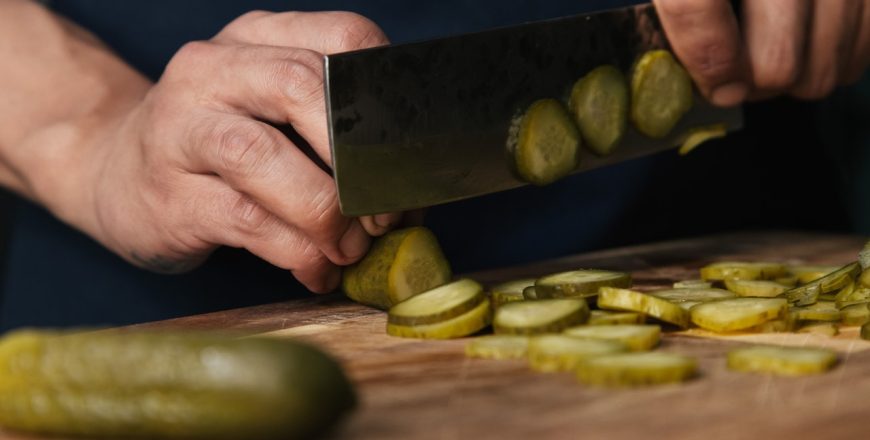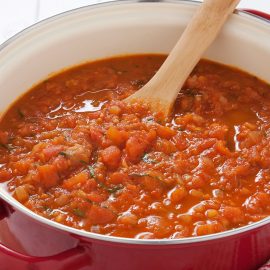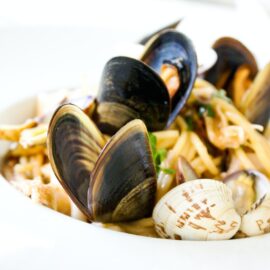
The Different Pickle Varieties – and What Makes Each Pickle Different
If you’re thinking of expanding your range of products or have a restaurant (or you love pickles in any way, shape, or form), there is much more to the humble pickle than meets the eye. Many restaurants, for example, offer different varieties of pickles, and pickles are not just cucumbers, after all – basically, every kind of vegetable can be pickled, be it onion, pepper, cabbage, garlic, beetroot, and so much more. But when we’re talking about cucumbers, there are different ways of pickling them! First, of course, the most famous is the dill pickle, but this is closely followed by kosher pickles, bread and butter pickles, and everything in between. So without further ado, here are the different pickle varieties – and what makes each pickle different.

The history
But first – what is the history of the pickle, anyway? The truth is that pickles have been around for a long time – from 2030 BC. Even though there are different types all over the world (think kimchi in South Korea and sauerkraut in Germany), the cucumber is the most famous and most popular pickle. These are either fermented or marinated in brine, with various shapes ranging from spears to chips to wholes and halves and slices. The pickle can vary in texture, but more importantly, it can vary in taste.
The different varieties available
- Dill pickles
Dill pickles are the star of the show, and for good reason. It is arguably the most popular of the different types of pickles out there, and their taste is what sets them apart – a bit on the tart and salty side. Most dill pickles in a jar and in a pantry are made from vinegar-based brine, whilst refrigerated versions are often made with salt-based brine.
- Bread and butter pickles
These pickles are next on the list, and it’s another favourite because it is used mainly for burgers and sandwiches. They are mostly bought in bulk, and you can get different wholesale pickles from EE & Brian Smith. This pickle is a little sweeter than the classic dill pickle. It gets its sweetness mostly from the onions – along with a marinade of salt, sugar, white vinegar, celery, coriander and mustard seeds.
- Gherkins
The first thing you may notice about the good old gherkin is how it looks – it is often smaller than the cucumber, with a length of 1 – 2 inches and a rough and curved shape. Gherkins generally come with a distinctive sweet flavour, though they can also be made much like sour or dill pickles. The main thing that separates it from other pickles is its texture – since it is small and bumpy, it has a lot more crunchiness. Most gherkins are served whole rather than sliced or halved, which means they aren’t served on sandwiches – instead, you will see them on their own on a charcuterie board or at a deli as a garnish.
- Cornichons
Cornichons are similar in appearance to gherkins, but they are smaller – and some people refer to them as French gherkins. You can get them fermented, but another way is to get them marinated in a mix of herbs and spices like tarragon, pepper, or dill.
Notice: Undefined index: ssba_bar_buttons in /home/ronnyell/domains/ronnyelliott.com/public_html/wp-content/plugins/simple-share-buttons-adder/php/class-buttons.php on line 598
Notice: Undefined index: ssba_bar_buttons in /home/ronnyell/domains/ronnyelliott.com/public_html/wp-content/plugins/simple-share-buttons-adder/php/class-buttons.php on line 598
Notice: Undefined index: ssba_bar_buttons in /home/ronnyell/domains/ronnyelliott.com/public_html/wp-content/plugins/simple-share-buttons-adder/php/class-buttons.php on line 598
Notice: Undefined index: ssba_bar_buttons in /home/ronnyell/domains/ronnyelliott.com/public_html/wp-content/plugins/simple-share-buttons-adder/php/class-buttons.php on line 598
Notice: Undefined index: ssba_bar_buttons in /home/ronnyell/domains/ronnyelliott.com/public_html/wp-content/plugins/simple-share-buttons-adder/php/class-buttons.php on line 598








